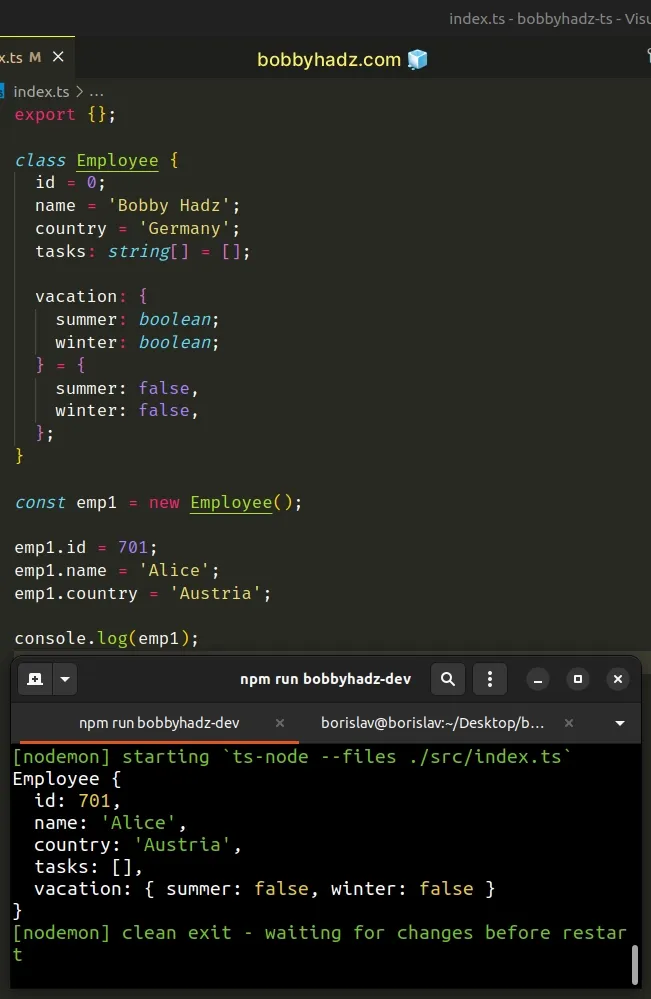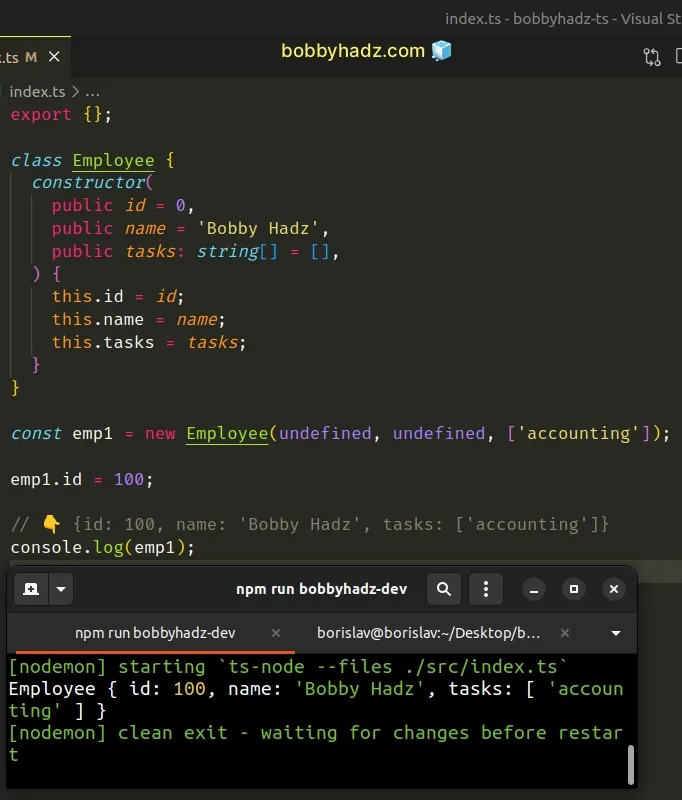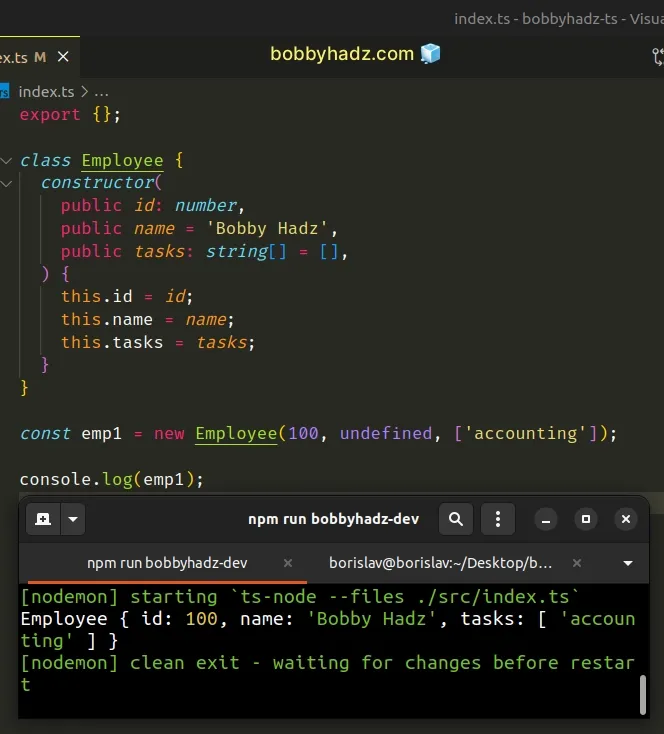Set default values for Class properties in TypeScript
Last updated: Feb 28, 2024
Reading time·3 min

# Set default values for Class properties in TypeScript
You can set default values for class properties directly on the class.
When you instantiate the class with the new operator, you will have access
to the default value for the property and you have the ability to change it
later on.
class Employee { id = 0; name = 'Bobby Hadz'; country = 'Germany'; tasks: string[] = []; vacation: { summer: boolean; winter: boolean; } = { summer: false, winter: false, }; } const emp1 = new Employee(); emp1.id = 701; emp1.name = 'Alice'; emp1.country = 'Austria'; emp1.tasks = ['web dev', 'design']; emp1.vacation = { summer: true, winter: false, }; // 👇️ {id: 701, name: 'Alice', country: 'Austria', ...} console.log(emp1);

We created an Employee
class with
default values for various properties.
TypeScript is able to infer the type of the id, name and country
properties based on the default values we provided.
However, if you specify a default value that is an
empty array, TypeScript infers
its type to be never[].
In other words, it is typed as an array that will always be empty.
All of the initial values can be changed by creating an instance of the class and changing the properties on the instance.
# Specifying default values in the constructor method
An alternative approach is to provide default values in the constructor method of the class.
class Employee { constructor( public id = 0, public name = 'Bobby Hadz', public tasks: string[] = [], ) { this.id = id; this.name = name; this.tasks = tasks; } } const emp1 = new Employee(undefined, undefined, ['accounting']); emp1.id = 100; // 👇️ {id: 100, name: 'Bobby Hadz', tasks: ['accounting']} console.log(emp1);

We provided default values for the class's properties directly in the constructor.
You would use this approach if you need to override the defaults when
instantiating the class with the new operator.
undefined when instantiating the class.Note that you must explicitly type any of the class's properties or parameters for which you don't set a default value.
class Employee { constructor( public id: number, public name = 'Bobby Hadz', public tasks: string[] = [], ) { this.id = id; this.name = name; this.tasks = tasks; } } const emp1 = new Employee(100, undefined, ['accounting']);

The id parameter doesn't have a default value set, so we must explicitly type
it as number.
When using this approach with classes that take an object as a parameter, the syntax is a bit more confusing.
class Employee { id: number; name: string; tasks: string[]; vacation: { summer: boolean; winter: boolean; }; constructor( { id, name, tasks, vacation } = { id: 0, name: 'Bobby Hadz', tasks: [], vacation: { summer: false, winter: false }, }, ) { this.id = id; this.name = name; this.tasks = tasks; this.vacation = vacation; } } const emp1 = new Employee(); // 👇️ Employee {id: 0, name: 'Bobby Hadz', tasks: []} console.log(emp1); emp1.id = 100; emp1.name = 'Alice'; emp1.tasks = ['web dev', 'design']; emp1.vacation.summer = true; // 👇️ {id: 100, name: 'Alice', tasks: ['web dev', 'design'], ...} console.log(emp1);
When you have an object parameter in a class constructor, things become a bit harder to read.
This is why I prefer sticking to multiple, comma-separated parameters.
We don't have to remember the parameter order when instantiating the class because any modern IDE shows us which parameter we are on, and which we need to provide next.
# Additional Resources
You can learn more about the related topics by checking out the following tutorials:

